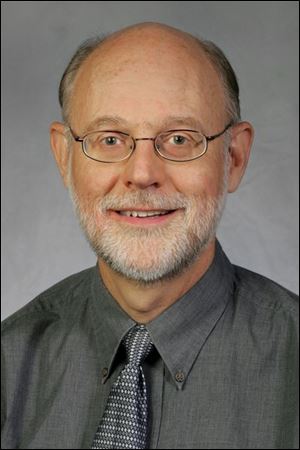
BGSU prof studied face transplant risks, ethics
12/18/2008
Agich
BOWLING GREEN - George Agich spent years helping create an ethical framework for facial transplant.
The bioethicist and professor of philosophy at Bowling Green State University worked with Dr. Maria Siemionow at the Cleveland Clinic, who recently led the nation's first near-total face transplant, on creating a protocol for such an undertaking.
They posed questions about how such a procedure could impact the identity of a patient and whether the risks are worth the reward.
Mr. Agich was the chairman of bioethics at the Cleveland Clinic from 1997 to 2005, spending several of those years developing the guidelines with the institutional review board.
It was approved in May, 2004, and Mr. Agich said it's no surprise it took so long to find the right patient for the first procedure.
"The patients who this would be used for would be patients who not just said, 'I want a nose job and while I'm at it let's fix the rest of my face.' These are patients with severe facial deformities," Mr. Agich said.
Such patients would have suffered major burns, trauma, some cancers, or skin diseases.
Mr. Agich noted that he no longer works at the Cleveland Clinic and doesn't know any more than what he's read about the patient and the procedure.
Mr. Agich's work involved the impact a facial transplant could have on a person's identity.
He said it's not as dramatic as taking one person's face and putting it on another so that they look like someone else. It's not like the 1997 movie Face Off, he said.
"Think about taking something like silk and overlaying it over the object; it will take the shape of the object," he said.
And the procedure could be important to a person keeping his or her identity because reconstruction procedures leave some without the ability to express themselves, he said.
"So far, using the tissue that you have from your body has managed to restore lips and cheeks and skins and get rid of scar tissue, but it's been very static," Mr. Agich said. "They talk about it like a mask."
Another ethical concern was that it appears to be a cosmetic procedure and whether it is worth subjecting the patient to immunosuppression drugs for the rest of his or her life, leaving the patient at risk of infections or rejection of the donor tissue.
That argument, he said, is based mostly on research of solid-organ transplants, such as hearts and kidneys, and the risks have been justified in those instances because it's life-saving.
Still this is more than cosmetic because many of these people have difficulty with basic functions, he said. And for the risks, it's a composite tissue transplant, so the immunosuppression needs are far less, he said.
An unexpected question that came up through the process is that the donor tissue comes from a cadaver, so what is the best way to work with the relatives of that person who no longer has a face, Mr. Agich said. "This is a totally new area," he said. "And in fact, that's one of the things we put into the protocol."
Contact Meghan Gilbert at:
mgilbert@theblade.com
or 419-724-6134.